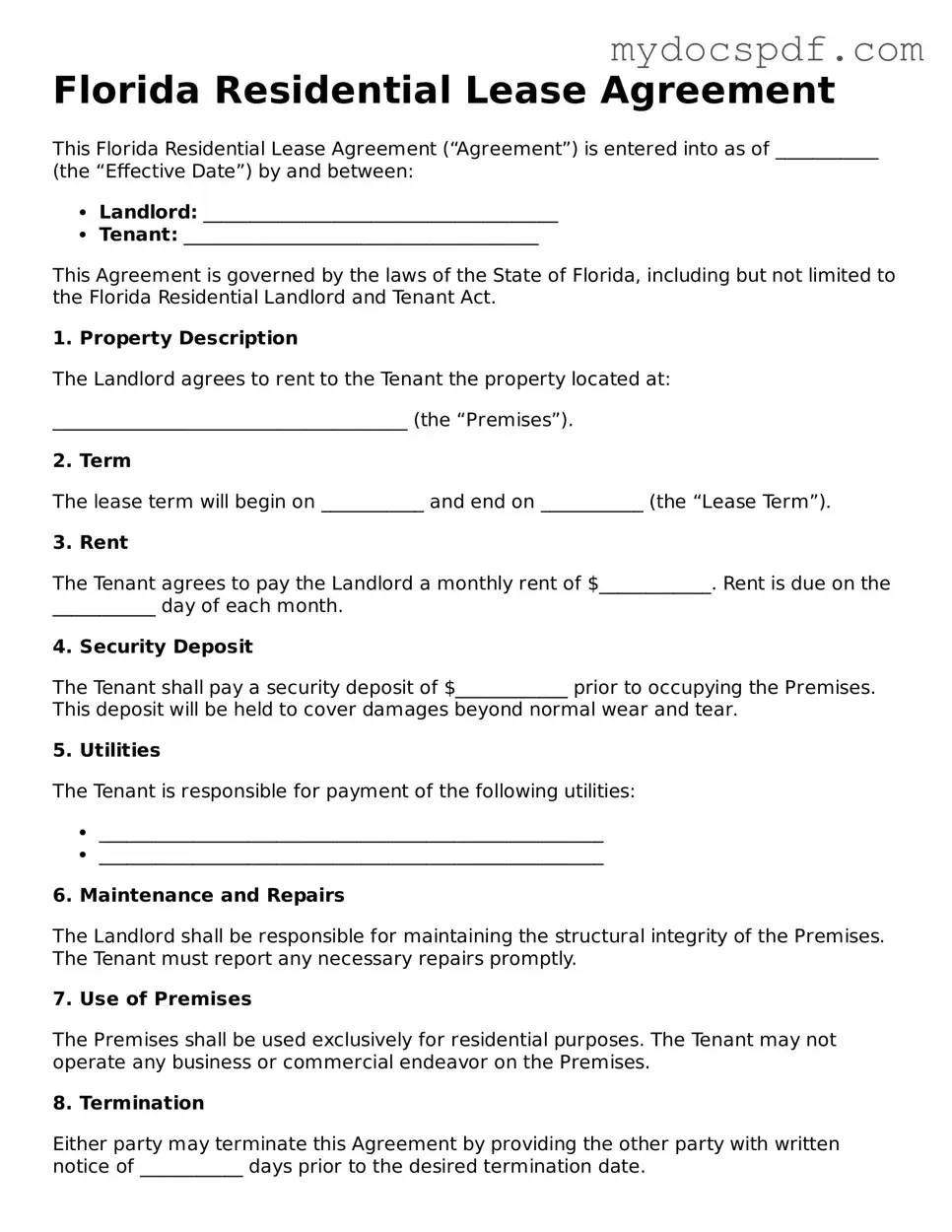Florida Residential Lease Agreement
This Florida Residential Lease Agreement (“Agreement”) is entered into as of ___________ (the “Effective Date”) by and between:
- Landlord: ______________________________________
- Tenant: ______________________________________
This Agreement is governed by the laws of the State of Florida, including but not limited to the Florida Residential Landlord and Tenant Act.
1. Property Description
The Landlord agrees to rent to the Tenant the property located at:
______________________________________ (the “Premises”).
2. Term
The lease term will begin on ___________ and end on ___________ (the “Lease Term”).
3. Rent
The Tenant agrees to pay the Landlord a monthly rent of $____________. Rent is due on the ___________ day of each month.
4. Security Deposit
The Tenant shall pay a security deposit of $____________ prior to occupying the Premises. This deposit will be held to cover damages beyond normal wear and tear.
5. Utilities
The Tenant is responsible for payment of the following utilities:
- ______________________________________________________
- ______________________________________________________
6. Maintenance and Repairs
The Landlord shall be responsible for maintaining the structural integrity of the Premises. The Tenant must report any necessary repairs promptly.
7. Use of Premises
The Premises shall be used exclusively for residential purposes. The Tenant may not operate any business or commercial endeavor on the Premises.
8. Termination
Either party may terminate this Agreement by providing the other party with written notice of ___________ days prior to the desired termination date.
9. Governing Law
This Agreement shall be governed by the laws of the State of Florida.
10. Signatures
By signing below, both parties agree to the terms of this Lease Agreement.
- Landlord Signature: _______________________ Date: ___________
- Tenant Signature: ________________________ Date: ___________
